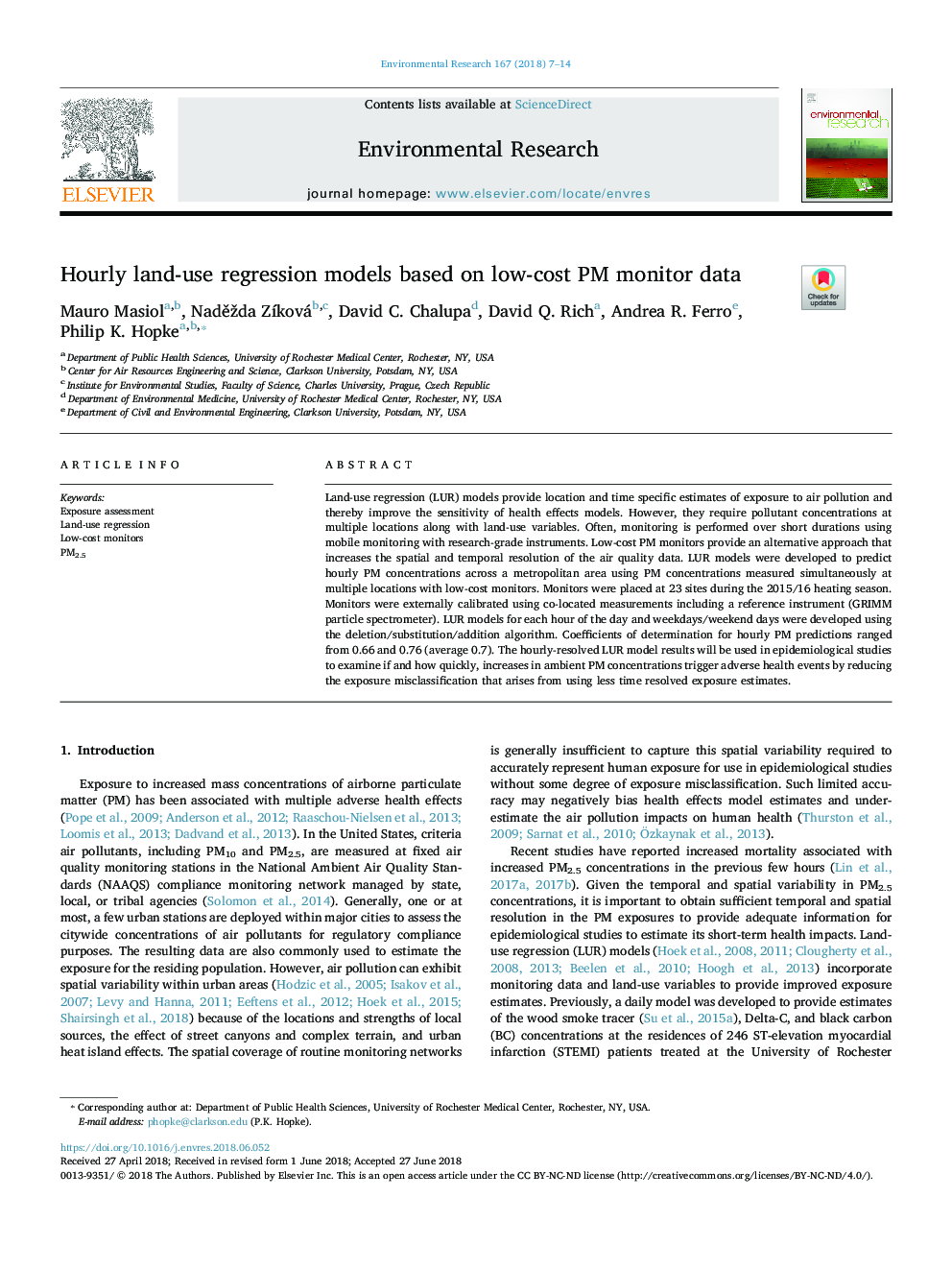| Article ID | Journal | Published Year | Pages | File Type |
|---|---|---|---|---|
| 8868781 | Environmental Research | 2018 | 8 Pages |
Abstract
Land-use regression (LUR) models provide location and time specific estimates of exposure to air pollution and thereby improve the sensitivity of health effects models. However, they require pollutant concentrations at multiple locations along with land-use variables. Often, monitoring is performed over short durations using mobile monitoring with research-grade instruments. Low-cost PM monitors provide an alternative approach that increases the spatial and temporal resolution of the air quality data. LUR models were developed to predict hourly PM concentrations across a metropolitan area using PM concentrations measured simultaneously at multiple locations with low-cost monitors. Monitors were placed at 23 sites during the 2015/16 heating season. Monitors were externally calibrated using co-located measurements including a reference instrument (GRIMM particle spectrometer). LUR models for each hour of the day and weekdays/weekend days were developed using the deletion/substitution/addition algorithm. Coefficients of determination for hourly PM predictions ranged from 0.66 and 0.76 (average 0.7). The hourly-resolved LUR model results will be used in epidemiological studies to examine if and how quickly, increases in ambient PM concentrations trigger adverse health events by reducing the exposure misclassification that arises from using less time resolved exposure estimates.
Related Topics
Life Sciences
Environmental Science
Health, Toxicology and Mutagenesis
Authors
Mauro Masiol, NadÄžda ZÃková, David C. Chalupa, David Q. Rich, Andrea R. Ferro, Philip K. Hopke,
